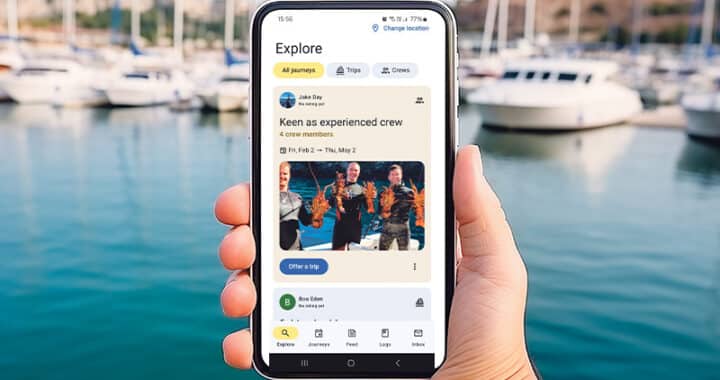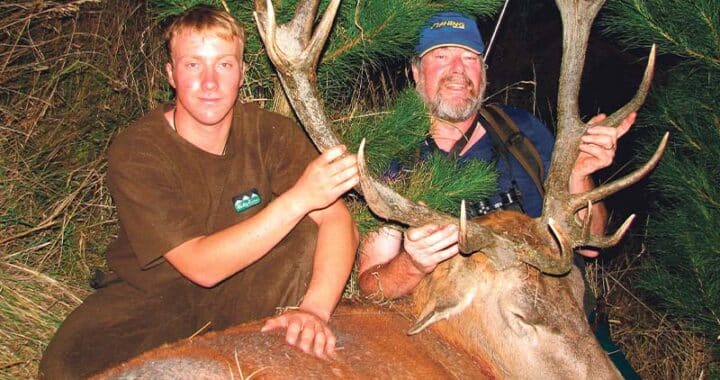Getting started with drone fishing
5 min read
For Pat Cox, using a drone was the ultimate way to continue enjoy surfcasting. Photo: Pat Cox
As with most things, sooner or later, technology is going to catch up with whatever you do.
I started fishing Lake Taupo back in the early ’60s from a small dingy round the Western Bays. My father had only one net on his boat.
My mate and I in the dingy, when either hooking a steelhead or rainbow trout, had no choice when getting it up to the boat but to grab the trace and just flick the fish into the bottom of the boat. We had standard Alvey-type reels; we could not afford the three-in-one geared modern reels.
In my 20s, I bought a 12ft Parker Craft with outboard, then moved onto a Caribbean Corsair with a 125 Johnson and auxiliary, and caught good fish off this boat out on the reef and the white cliffs on Lake Taupo. In 1982, I purchased the 40ft Bridge decker – the Victory – and enjoyed many years hunting and fishing and recreational family days.
As a keen diver and saltwater fisherman, whenever the opportunity arose, I was on the sea trying my luck for a few good snapper and crays. As time moved on, the boats were disposed of for one reason or another and so surfcasting became the obvious option.
I was living in Whakatane at the time and I purchased a purpose-built Iceman 4.2-metre surfcaster. Just learning to cast for the amateur was a bit of an act. I had absolutely no idea until I Googled some of the best surfcasters in the world and was down the beach every night with just a four-ounce sinker on trying to cast 100 meters up the beach.
I got so good I started breaking the sinker off but could not work out why. I did not realise how much I was loading the line up and the 15 to 20lb line could not withstand the pressure. I was back in the shop to find a solution and walked out with shock leaders. Once these were in place, the problem was solved and I went on to enjoy some great days fishing.
But as time would catch up, all those years spent in hard labour in forestry, the shoulders packed up and getting the line out 50 meters became a bit of a mission.
It was around this time I noticed the odd drone on YouTube and I thought it was for me. I did not expect to get the flak from my fishing companion when I told her a drone was the way to go. I was told in no uncertain terms that this was not fishing. But bugger it, I stuck to my guns and said we have come a long way since we started using flax twine and bone hooks and I just saw this as introducing technology to surfcasting; no different to electric reels on boats or torpedos off the beach.
After a lot of soul searching and research, I ended up purchasing a waterproof Splash Drone with auto release for the line. They are not cheap at a couple of grand but to me, it was the ultimate way to continue to enjoy surfcasting, I did not want it to drop multiple hooks. For me, a maximum of three hooks and I still wanted the experience of pulling the fish in on my surfcaster.
We have come along way since we started using flax twine and bone hooks
First step was up the local park working out how to fly my new toy. Initially, after set up and getting the right amount of satellites up, the motors started and all went well until I got it round the wrong way and crashed it into a post, damaging the carbon fibre props in the process.
After a few more self-taught lessons, I was keen to get the drone over the water. The only thing worrying me was getting it home again. If programmed correctly, all you have to do is flick the home switch and it will come back automatically. The trick is getting your line set up, then start the drone, hook the line up, and send it out.
Using an eggbeater reel with 300 meters of braid is plenty of line. You have a tendency to fly past the fish. Each drop takes approximately two minutes, and battery life depending on flying conditions is about 15 minutes.
All was going well until a small disagreement with my fishing partner and I decided to fish on my own one day. However, being in a bit of ‘I will do this myself’ state, I did not do my drone checks properly and sent the line out, dropped it, and hit the return switch.
Halfway back, the lid that I had forgotten to screw down properly came off, losing satellites coverage and taking the props out. I saw the drone dive sideways and disappear under the waves, never to be seen again. Lesson learned: do your checks thoroughly before flying every time and give yourself a written checklist and stick to it.
A new updated version was purchased with bigger, more powerful motors that will fly in winds of 15 to 20 knots, remembering the harder the drone works the shorter the battery life. I have three batteries for the drone and a spare for the remote.
The new drone carries one kilo of weight and the fishing model comes with auto release and fixed camera relayed to your remote control. To me, this is the ultimate in surfcasting, as it adds a new dimension to fishing.
Before dropping a line, you can send the drone out and look for holes. The distance and location of the drone also appear on your remote control.
Here are a few tips if you plan to embrace technology. Before fishing a new location, do your research. Find out where the reefs are. You can drop floating lines with a balloon. It would be best if you can find a quiet beach without too many spectators to start off, as people are curious.
For me, it is all about perfecting the art, as I am still learning but it is the way of the future and the sooner you start, the better, as one day because of the adverse publicity and people’s aversion to drones, it could get harder to get into.
The Splash Drone will fly up to a kilometre out to sea; trouble is, you will lose sight of it by then and you will rely on the auto return. Rule of thumb: do not fly past the fish.
Words by Pat Cox



